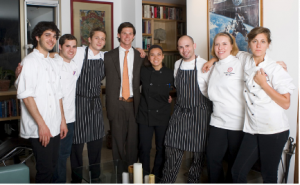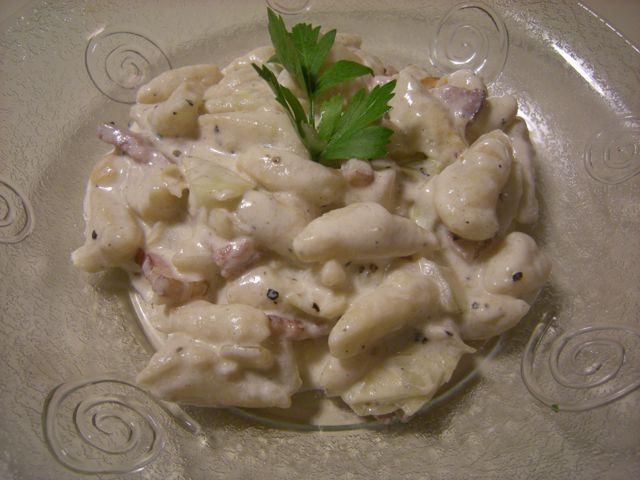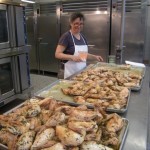April 29, 2009
US and Mexico authorities claim that neither knew about the “swine flu” outbreak until April 24. But after hundreds of residents of a town in Veracruz, Mexico, came down with its symptoms, the story had already hit the Mexican national press by April 5. The daily La Jornada reported:
Clouds of flies emanate from the rusty lagoons where the Carroll Ranches business tosses the fecal wastes of its pig farms, and the open-air contamination is already generating an epidemic of respiratory infections in the town of La Gloria, in the Perote Valley, according to Town Administrator Bertha Crisóstomo López.
The town has 3,000 inhabitants, hundreds of whom reported severe flu symptoms in March.
CNN’s Dr. Sanjay Gupta, reporting from Mexico, has identified a La Gloria child who contracted the first case of identified “swine flu” in February as “patient zero,” five-year-old Edgar Hernández, now a survivor of the disease.
By April 15 – nine days before Mexican federal authorities of the regime of President Felipe Calderon acknowledged any problem at all – the local daily newspaper, Marcha, reported that a company called Carroll Ranches was “the cause of the epidemic.”
La Jornada columnist Julio Hernández López connects the corporate dots to explain how the Virginia-based Smithfield Farms came to Mexico: In 1985, Smithfield Farms received what was, at the time, the most expensive fine in history – $12.6 million – for violating the US Clean Water Act at its pig facilities near the Pagan River in Smithfield, Virginia, a tributary that flows into the Chesapeake Bay. The company, according to the US Environmental Protection Agency (EPA) dumped hog waste into the river.
It was a case in which US environmental law succeeded in forcing a polluter, Smithfield Farms, to construct a sewage treatment plant at that facility after decades of using the river as a mega-toilet. But “free trade” opened a path for Smithfield Farms to simply move its harmful practices next door into Mexico so that it could evade the tougher US regulators.
The North American Free Trade Agreement (NAFTA) came into effect on January 1, 1994. That very same year Smithfield Farms opened the “Carroll Ranches” in the Mexican state of Veracruz through a new subsidiary corporation, “Agroindustrias de México.”
Unlike what law enforcers forced upon Smithfield Farms in the US, the new Mexican facility – processing 800,000 pigs into bacon and other products per year – does not have a sewage treatment plant.
According to Rolling Stone magazine, Smithfield slaughters an estimated 27 million hogs a year to produce more than six billion pounds of packaged pork products. (The Veracruz facility thus constitutes about three percent of its total production.)
Reporter Jeff Teitz reported in 2006 on the conditions in Smithfield’s US facilities (remember: what you are about to read describes conditions that are more sanitary and regulated than those in Mexico):
Smithfield’s pigs live by the hundreds or thousands in warehouse-like barns, in rows of wall-to-wall pens. Sows are artificially inseminated and fed and delivered of their piglets in cages so small they cannot turn around. Forty fully grown 250-pound male hogs often occupy a pen the size of a tiny apartment. They trample each other to death. There is no sunlight, straw, fresh air or earth. The floors are slatted to allow excrement to fall into a catchment pit under the pens, but many things besides excrement can wind up in the pits: afterbirths, piglets accidentally crushed by their mothers, old batteries, broken bottles of insecticide, antibiotic syringes, stillborn pigs—anything small enough to fit through the foot-wide pipes that drain the pits. The pipes remain closed until enough sewage accumulates in the pits to create good expulsion pressure; then the pipes are opened and everything bursts out into a large holding pond. The temperature inside hog houses is often hotter than ninety degrees. The air, saturated almost to the point of precipitation with gases from shit and chemicals, can be lethal to the pigs. Enormous exhaust fans run twenty-four hours a day. The ventilation systems function like the ventilators of terminal patients: If they break down for any length of time, pigs start dying.
Consider what happens when such forms of massive pork production move to unregulated territory where Mexican authorities allow wealthy interests to do business without adequate oversight, abusing workers and the environment both. And there it is: The violence wrought by NAFTA in clear and understandable human terms.
The so-called “swine flu” exploded because an environmental disaster simply moved (and with it, took jobs from US workers) to Mexico where environmental and worker safety laws, if they exist, are not enforced against powerful multinational corporations.
False mental constructs of borders – the kind that cause US and Mexican citizens alike to imagine a flu strain like this one invading their nations from other lands – are taking a long overdue hit by the current “swine flu” media frenzy. In this case, US-Mexico trade policy created a time bomb in Veracruz that has already murdered more than 150 Mexican citizens, and at least one child in the US, by creating a gigantic Petri dish in the form pig farms to generate bacon and ham for international sale.
None of that indicates that this flu strain was born in Mexico, but, rather, that the North American Free Trade Agreement created the optimal conditions for the flu to gestate and become, at minimum, epidemic in La Gloria and, now, Mexico City, and threatens to become international pandemic.
Welcome to the aftermath of “free trade.” Authorities now want you to grab a hospital facemask and avoid human contact until the outbreak hopefully blows over. And if you start to feel dizzy, or a flush with fever, or other symptoms begin to molest you or your children, remember this: The real name of this infirmity is “The NAFTA Flu,” the first of what may well emerge as many new illnesses to emerge internationally as the direct result of “free trade” agreements that allow companies like Smithfield Farms to escape health, safety and environmental laws.


















